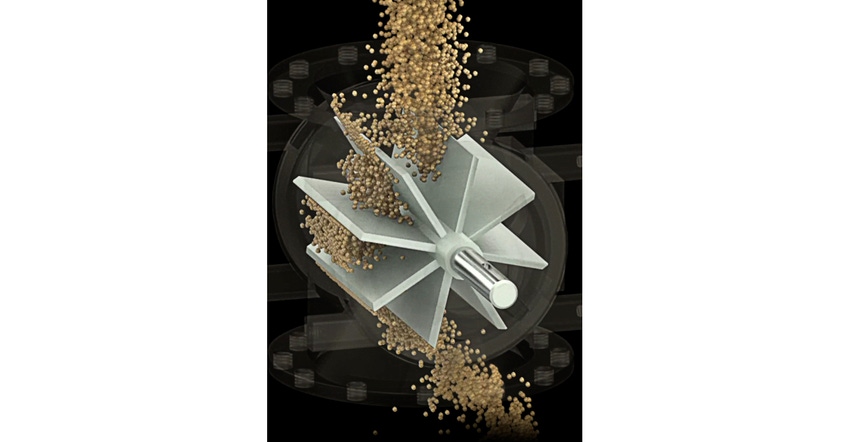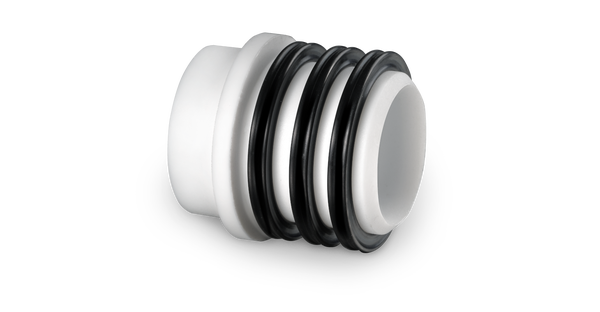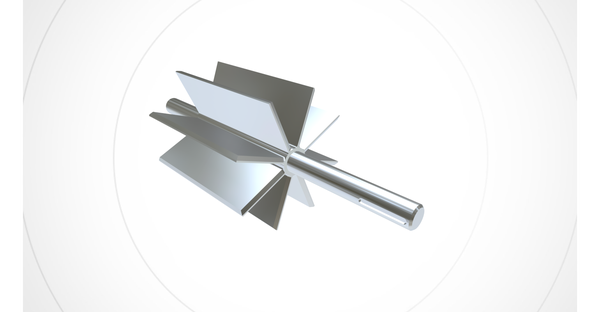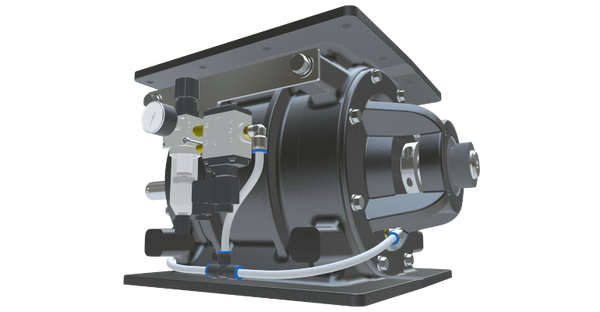Why Do Rotary Airlocks Leak, and When is it a Cause for Concern?
A small amount of air leakage is expected in rotary airlock valves, but a larger leak may be cause for concern. Learn how to identify a problematic leak with these tips.
April 18, 2023

Paul Bowman, technical support, ACS Valves
Rotary airlock leakage is a complicated topic because of all the possible contributing factors. There are several possible ways an airlock can begin to leak, which can result in a loss of performance.
A certain amount of leakage is expected. A larger leak can become a concern for bulk material processors, posing a potential threat to equipment longevity, material integrity, and plant safety.
Rotary airlock operators must be able to tell between normal levels of airlock leakage and larger, more problematic leaks that may cause damage. It is also essential to understand how to diagnose and troubleshoot leakage, what types of preventative maintenance to perform on a rotary airlock valve, and what design considerations help minimize leaks within an airlock.

Expected Levels of Rotary Airlock Leakage
The purpose of a rotary airlock valve is to maintain a consistent pressure differential between two points. It seals the airflow between the valve’s inlet and outlet, helping to maintain a safe and efficient flow of material.
That said, airlocks are not designed to be air seals. The pressure seal requires a minimum clearance to enable rotor movement. Put simply, if the airlock were 100% sealed, it would not be able to rotate.
Rotor Clearances
A small clearance is required between the rotor blades and housing to ensure it can rotate enough to effectively convey material. The rotor-to-housing clearances must stay below 0.0079 in. to comply with NFPA standards.
The actual clearance size depends on the system – factors such as speed, temperature, material of construction, and rotor diameter all contribute.
Rotor clearances must stay below a recommended level to reduce waste, prevent safety hazards, and optimize the amount of material each rotor pocket may carry per rotation.

Rotor Displacement Leakage
When material enters the rotary valve, entrained air goes in one of two directions: Some air exits through those small clearances, while some air meets pressure at the outlet and stays trapped within the rotor as a result. The trapped air can be pushed back to the inlet as the rotor turns, exiting into the hopper and potentially hampering material flow. This is called rotor displacement leakage or blow-by and, in smaller amounts, it is normal and expected.
When Airlock Leakage is a Concern
When the rotor-to-housing clearances measure more than 0.0079 in. level, the rotary valve does not perform as effectively as an airlock. The pressure differential increases, and performance will drop. This is when material may begin to leak from the inlet. If material escapes the system in this way, it can become a combustible dust hazard.
Rotor displacement leakage can also become an issue when levels of trapped air within the valve rise too high. The air that re-enters the feed hopper can interfere with the flow of material.
A third type of leak can occur when the rotary valve has worn-out shaft seals. When a seal begins to break down, material will leak to the outside environment. This is even more common in types of valves that use packing glands instead of seals, as they require more frequent maintenance. A shaft seal consisting of three quad rings and a Teflon sleeve lasts longer, eliminates static electricity, and is most effective at sealing the area.
Diagnosing Leaks
Certain signs may point to a leak within the rotary airlock valve. Shaft seal leaks are more evident, showing visible signs of material exiting around the shaft seal area.
When the valve sounds much louder than usual or there is a drop in performance, there could be several different issues at hand, but increased rotor clearances are a common culprit.
In any case, shut down the system and inspect the valve before taking any action. A valve operation manual should be consulted to troubleshoot the specific issue.
The solution typically involves checking parts for wear or damage, or possibly adjusting a part that has moved from its original position. These more typical types of leaks are generally fixed by replacing the shaft seals or rotor.
Maintenance Procedures to Prevent Leaks
It is vital to check rotor-to-housing tolerances every three months at minimum. Tolerances, or clearances, are the gaps between the rotor blades and housing. As ingredients pass through the valve, they wear down the rotor tips over time – how much depends on the abrasiveness of the material. Check to ensure the tolerances stay below recommended measurements, or 0.0079 in. for NFPA compliance, and replace the rotor when necessary.
In the case of rotor displacement leakage, it is important to keep an eye on the pressure differential across the valve, the volume of material within the rotor pockets, the feed rate of the product, and the valve’s shaft speed. These factors must be properly measured and maintained to avoid unnecessary air leakage into the feed hopper.
For seal leakage, simply replace shaft seals or packing as often as possible. ACST-4 shaft seals are recommended to last longer and maintain the best seal.
As an added tip, keep a stock of spare parts on the shelf to restart production quickly without having to wait for shipments. OEM parts are the most reliable in terms of measurements and quality.
Valve Design Considerations
Certain aspects of rotary airlock valve design are there to prevent air leakage. Because leakage cannot be completely eliminated, venting is a critical part of any pressure conveying system.
Proper venting captures and redirects the pressurized air within the airlock, helping to relieve it in areas where air should not be leaking. Rotary airlocks can be vented directly with the right type of accessory. In other cases, a small, vented transition hopper can be installed between the feed source and the airlock. The supplier can recommend what works best in a given application.
Sometimes, due to the nature of a given system or application, material builds up around the shaft seal area or wears it down more quickly than usual. In these situations, it is advised to consider an air purge connection or mechanical seal. Different mechanisms are available, but generally use pressurized air purges to keep material away from the seal.

Working with a Supplier
A rotary valve supplier can calculate the predicted amount of leakage based on the material, system, and application. They should be consulted at the design phase to determine the correct type of airlock, features, rotor speed, and sizing needed to convey the material effectively with minimal leakage.
The supplier should also have technical support experts available to help solve any problems that operators are unable to troubleshoot on their own.
Paul Bowman is technical support, ACS Valves (Caledonia, ON, Canada). For more information, call 905-765-2004 or visit acsvalves.com.
You May Also Like


